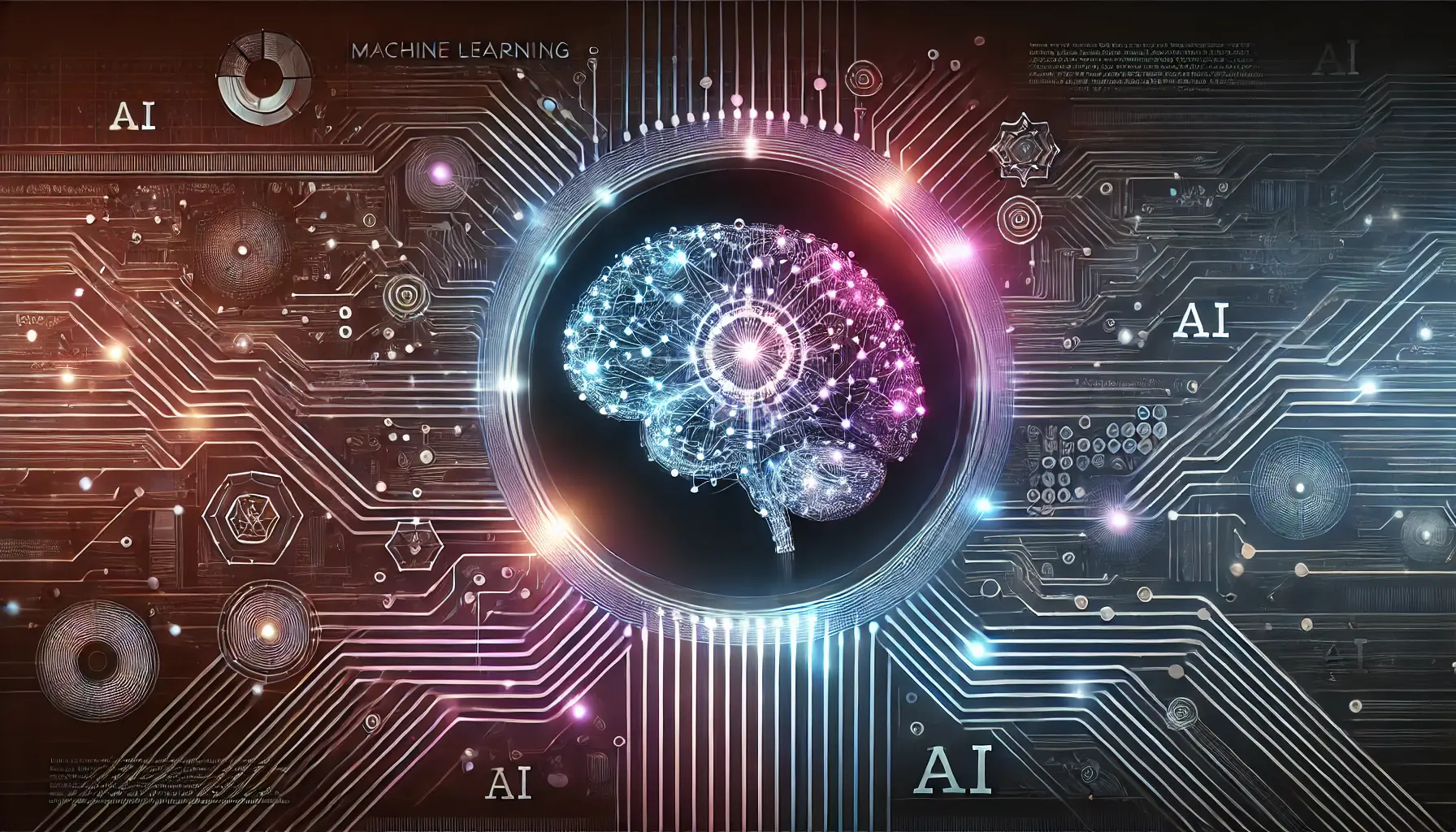As the digital landscape evolves, the intersection of machine learning and search engine optimization (SEO) is becoming increasingly significant.
Machine learning, a branch of artificial intelligence (AI), has revolutionized the way search engines understand and process human language, leading to the emergence of semantic SEO.
This approach focuses on the meaning behind words, going beyond traditional keyword matching to comprehend the intent and contextual relevance of search queries.
The role of machine learning in semantic SEO is pivotal, as it enables search engines to deliver more accurate, relevant, and personalized search results, enhancing the user experience and offering new challenges and opportunities for content creators and marketers.
The integration of machine learning algorithms into search engines has transformed SEO strategies from a keyword-centric approach to a more nuanced, semantic-focused strategy.
This shift requires a deeper understanding of how machine learning works and its impact on search algorithms.
By analyzing vast amounts of data, machine learning algorithms can identify patterns, trends, and relationships within the content, making it possible for search engines to understand the context and nuances of language.
This capability is at the heart of semantic SEO, where the goal is to align content with the user’s intent and the semantic meaning of their queries, rather than merely matching exact keywords.
- The Evolution of SEO: From Keywords to Semantics
- Key Components of Machine Learning in SEO
- Machine Learning Algorithms and SEO Tools
- Impact of Machine Learning on Search Engine Algorithms
- Challenges and Opportunities in Semantic SEO
- Best Practices for Implementing Semantic SEO
- Future Trends in Machine Learning and SEO
- Embracing the Future: Machine Learning’s Transformative Impact on SEO
- Machine Learning and Semantic SEO FAQs
The Evolution of SEO: From Keywords to Semantics
The journey from keyword-based optimization to semantic SEO marks a significant shift in the digital marketing world.
Initially, SEO strategies heavily relied on incorporating specific keywords into web content to rank higher on search engine results pages (SERPs).
However, this approach often led to content that was overly optimized for search engines at the expense of user experience.
The advent of machine learning algorithms has changed this dynamic, enabling search engines to understand and interpret the context and intent behind search queries.
This evolution towards semantic SEO underscores the importance of creating content that is not only keyword-relevant but also contextually rich and meaningful.
Machine learning algorithms analyze content for its relevance to various search intents, considering factors such as synonyms, related terms, and the overall topic of the content.
This analysis helps search engines match users with the most relevant content, improving the quality of search results and user satisfaction.
The shift to semantic SEO encourages marketers and content creators to think more about the user’s intent and the broader context of their queries, rather than focusing solely on keywords.
Understanding Semantic Search
Semantic search represents a paradigm shift in how search engines operate, moving from a focus on keywords to understanding the intent and contextual meaning behind search queries.
Powered by machine learning, semantic search analyzes the relationship between words, the possible intent of the user, and the context of the query.
This approach allows search engines to provide more accurate and relevant results, considering the nuances of human language and the varied ways in which people express their search needs.
The implications of semantic search for SEO are profound.
It requires a more sophisticated approach to content creation, one that prioritizes quality, relevance, and the ability to meet the user’s needs.
For businesses and content creators, this means adopting a more holistic SEO strategy that goes beyond keywords to include the creation of comprehensive, contextually relevant content that addresses the user’s intent.
By doing so, they can improve their visibility on SERPs and provide value to their audience, aligning their efforts with the capabilities and direction of modern search engines.
Machine learning’s influence on semantic SEO represents a shift towards more meaningful and contextually relevant search results, emphasizing the importance of understanding user intent and the semantic relationships between words.
Key Components of Machine Learning in SEO
Machine learning has introduced several key components into the SEO landscape, fundamentally altering how content is optimized for search engines.
These components highlight the shift towards a more nuanced, user-focused approach to SEO, driven by the ability of machine learning algorithms to understand and interpret the vast complexities of human language and search behavior.
Understanding these components is crucial for SEO professionals and content creators aiming to leverage semantic SEO strategies effectively.
By aligning content creation and optimization practices with these machine learning components, they can enhance the relevance and visibility of their content on search engines.
Content Relevance and Quality
The core of machine learning’s impact on SEO is its emphasis on content relevance and quality.
Search engines use machine learning algorithms to assess the quality of content, its relevance to specific search queries, and its ability to satisfy user intent.
This assessment goes beyond mere keyword presence, considering factors such as the depth of content, its comprehensiveness, and its contextual relevance to the query.
To optimize for machine learning-driven search engines, content creators should focus on:
- Creating in-depth content that thoroughly addresses the topics and questions relevant to their audience.
- Incorporating a variety of related terms and concepts that enrich the content’s context and relevance to a broader set of queries.
- Ensuring the content is up-to-date, accurate, and provides genuine value to the reader.
User Experience and Engagement
Machine learning algorithms also evaluate user engagement and experience signals as indicators of content quality and relevance.
Factors such as click-through rates (CTR), time spent on page, bounce rates, and user interaction levels are analyzed to determine how well content satisfies user needs.
To improve user experience and engagement, consider the following strategies:
- Designing web pages with a clear, intuitive structure that facilitates easy navigation and content consumption.
- Using engaging visuals and interactive elements to complement the text and enhance the user’s engagement with the content.
- Optimizing page load times and mobile responsiveness to ensure accessibility across devices and reduce bounce rates.
Personalization and User Intent
Machine learning enables search engines to personalize search results based on a user’s search history, behavior, and preferences, making understanding and optimizing for user intent more important than ever.
Content must be tailored not just to keywords but to the specific needs and questions of the target audience.
Effective strategies for aligning with user intent include:
- Conducting detailed keyword research that goes beyond volume and competition to include user intent and context.
- Segmenting content to target different stages of the user journey, from awareness to decision-making.
- Creating a variety of content formats (e.g., blog posts, videos, infographics) to cater to different preferences and search contexts.
Incorporating machine learning insights into SEO strategies requires a shift towards more user-centric, quality-focused content creation, emphasizing the importance of relevance, engagement, and personalization.
Machine Learning Algorithms and SEO Tools
The integration of machine learning algorithms into SEO tools has significantly enhanced the ability of marketers and SEO professionals to understand and optimize their content for search engines.
These advanced tools leverage machine learning to provide insights into search trends, keyword relevance, content optimization, and much more, enabling a more data-driven approach to SEO.
By utilizing these tools, SEO professionals can gain a competitive edge, identifying opportunities and weaknesses in their strategies with precision and efficiency.
The following outlines how machine learning algorithms are being applied in SEO tools and the benefits they offer.
Keyword and Content Analysis
Machine learning algorithms have revolutionized keyword research and content analysis, providing deeper insights into how keywords and content can be optimized for semantic search.
SEO tools powered by machine learning analyze keyword relevance, search volume, competition, and related terms, offering recommendations for content optimization that aligns with user intent and search context.
Benefits of using machine learning for keyword and content analysis include:
- Identification of long-tail keywords and semantic variations that can attract more targeted traffic.
- Insights into content gaps and opportunities for improvement based on current search trends.
- Recommendations for content structure and formatting that enhance readability and engagement.
SEO Performance Tracking
Tracking and analyzing SEO performance is crucial for understanding the effectiveness of optimization strategies.
Machine learning algorithms enhance SEO tools by providing more accurate and granular analytics, including keyword rankings, backlink quality, and the impact of SEO activities on search visibility.
Key advantages of machine learning in SEO performance tracking include:
- Automated analysis of large datasets to identify trends, patterns, and anomalies in SEO performance.
- Predictive insights that help forecast future SEO trends and potential shifts in search engine algorithms.
- Customizable reporting that allows for a deeper understanding of specific metrics and their impact on overall strategy.
User Behavior Analysis
Understanding how users interact with a website is essential for optimizing the user experience and improving SEO outcomes.
Machine learning algorithms enable sophisticated analysis of user behavior, such as page views, bounce rates, and conversion paths, providing actionable insights into how website design and content affect user engagement.
Strategies for leveraging machine learning in user behavior analysis include:
- Segmenting users based on behavior to identify patterns and preferences that can inform content and design decisions.
- Using heatmaps and user journey analytics to understand how users navigate through a site and interact with content.
- Optimizing content placement and site layout based on machine learning insights to improve user engagement and conversion rates.
The application of machine learning in SEO tools not only streamlines the optimization process but also provides a level of insight and precision that was previously unattainable, enabling SEO professionals to make more informed decisions and achieve better results.
Impact of Machine Learning on Search Engine Algorithms
Machine learning has significantly influenced the development and refinement of search engine algorithms, making them more sophisticated and capable of understanding the nuances of human language and intent.
This evolution has had a profound impact on how websites are ranked and how content is prioritized in search results, emphasizing the importance of relevance, quality, and user satisfaction in SEO strategies.
The impact of machine learning on search engine algorithms underscores the need for SEO professionals to adapt their approaches to align with these more advanced, intelligent systems.
Below, we explore several key areas where machine learning has reshaped search engine algorithms.
Enhanced Understanding of User Intent
One of the most significant contributions of machine learning to search engines is the enhanced ability to interpret user intent.
By analyzing vast amounts of search data, machine learning algorithms can discern the purpose behind search queries, whether informational, navigational, or transactional.
This capability allows search engines to deliver more relevant results that align with the user’s needs, improving the overall search experience.
For SEO, this means:
- Optimizing content to address specific user intents, rather than focusing solely on keywords.
- Creating diverse content that caters to different stages of the user journey.
- Employing natural language and question-based formats that mirror how users search for information.
Refinement of Content Quality Signals
Machine learning algorithms have also refined how search engines evaluate content quality.
Factors such as content depth, uniqueness, readability, and the presence of authoritative sources are analyzed to assess the value and relevance of content to search queries.
This has shifted the focus from quantity and keyword density to the overall quality and usefulness of content.
Implications for SEO include:
- Investing in comprehensive, well-researched content that provides real value to readers.
- Ensuring content is well-structured, readable, and includes authoritative references to enhance credibility.
- Avoiding thin content and keyword stuffing, which can negatively impact search rankings.
Personalization of Search Results
Machine learning enables search engines to personalize search results based on individual user behavior, search history, and preferences.
This level of personalization means that SEO strategies must be more dynamic and adaptable, considering the diverse ways in which content might be discovered and consumed by different segments of the audience.
To adapt to personalized search, SEO strategies should:
- Focus on creating a broad range of content that appeals to different user interests and needs.
- Consider the role of social signals and user engagement as factors in content visibility.
- Emphasize local SEO and mobile optimization to cater to users searching on the go.
The influence of machine learning on search engine algorithms has made SEO a more complex and nuanced field, requiring a deeper understanding of technology, user behavior, and content strategy to succeed.
Challenges and Opportunities in Semantic SEO
The shift towards semantic SEO, driven by machine learning, presents both challenges and opportunities for SEO professionals and content creators.
Adapting to this evolving landscape requires a nuanced understanding of how search engines interpret and rank content, as well as a strategic approach to content creation and optimization.
This section explores the key challenges and opportunities inherent in semantic SEO, offering insights into how businesses can navigate these changes effectively.
Navigating the Complexity of User Intent
One of the primary challenges in semantic SEO is accurately understanding and addressing the complexity of user intent.
As search engines become better at discerning the intent behind queries, SEO strategies must evolve to meet these sophisticated standards.
This involves creating content that not only incorporates relevant keywords but also aligns with the various types of user intent—informational, navigational, and transactional.
Opportunities in this area include:
- Developing a deeper understanding of target audiences and the specific questions they are seeking to answer through search.
- Creating diverse content formats, such as blog posts, FAQs, and product pages, to address different aspects of user intent.
- Utilizing analytics and SEO tools to gather insights into how users interact with content and refine strategies accordingly.
Keeping Pace with Algorithm Updates
Another significant challenge is the pace at which search engine algorithms evolve, largely due to the continuous integration of machine learning.
These updates can dramatically change the SEO landscape, requiring quick adaptation to maintain search rankings and visibility.
Staying informed about these changes and understanding their implications is crucial for success in semantic SEO.
The opportunity here lies in:
- Staying abreast of industry news and updates from search engines to anticipate and react to changes in algorithms.
- Conducting regular SEO audits to identify and address areas of improvement in response to algorithm updates.
- Building a flexible SEO strategy that can adapt to changes in the search landscape, focusing on long-term value and user experience.
Exploiting the Potential of Structured Data
Structured data is a powerful tool in semantic SEO, enabling search engines to better understand the content and context of web pages.
However, effectively implementing and optimizing structured data can be challenging, requiring technical knowledge and strategic planning.
The opportunities presented by structured data include:
- Enhancing content visibility in search results through rich snippets, which can improve click-through rates.
- Improving content discoverability and relevance by providing search engines with explicit clues about the meaning of the content.
- Staying competitive in increasingly crowded SERPs by making content stand out with features like FAQs and product reviews.
Semantic SEO, while challenging, offers significant opportunities for those willing to invest in understanding and leveraging the nuances of machine learning and user intent. By focusing on quality, relevance, and user experience, businesses can achieve greater visibility and engagement in the evolving search landscape.
Best Practices for Implementing Semantic SEO
Implementing semantic SEO effectively requires a strategic approach that aligns with the current capabilities of search engines and anticipates future developments.
As machine learning continues to refine the way search engines understand and process content, SEO professionals and content creators must adopt best practices that cater to these advanced algorithms.
This section outlines essential strategies for maximizing the impact of semantic SEO on your website’s visibility and user engagement.
Focus on Holistic Content Creation
At the heart of semantic SEO is the creation of holistic, comprehensive content that addresses the full spectrum of user intent.
This means moving beyond keyword stuffing and surface-level content to develop resources that provide genuine value to your audience.
Key strategies include:
- Researching and understanding the questions and needs of your target audience.
- Creating content that covers topics in depth, offering insights, answers, and valuable information.
- Incorporating a variety of content types and formats to engage users and encourage deeper exploration of your site.
Optimize for Topic Clusters Instead of Single Keywords
Machine learning algorithms favor content that demonstrates expertise and authority on a subject.
Organizing your content into topic clusters—groups of related content that cover a broad subject area—can help signal to search engines that your site is a valuable resource on specific topics.
Effective topic cluster strategies involve:
- Identifying core topics relevant to your business and audience.
- Creating a “pillar” page that provides a comprehensive overview of the topic.
- Developing related “cluster” content that addresses specific questions or aspects of the topic, linking back to the pillar page.
Leverage Structured Data to Enhance Understanding
Structured data markup is a critical tool for semantic SEO, as it helps search engines understand the context and content of your pages.
By using schema markup to provide explicit clues about the meaning of your content, you can improve your visibility in search results and qualify for rich snippets.
To effectively use structured data:
- Implement schema markup on your site to define elements like articles, products, events, and FAQs.
- Use Google’s Structured Data Testing Tool to validate your markup and ensure it’s correctly implemented.
- Keep up-to-date with the latest developments in schema.org to take advantage of new types of structured data.
Emphasize User Experience and Engagement
User experience (UX) and engagement are increasingly important factors in SEO, as they are indicative of content quality and relevance.
Ensuring that your site is easy to navigate, provides valuable content, and engages users can help improve your rankings and visibility.
UX and engagement optimization tips include:
- Designing your site with a clear, intuitive structure that facilitates content discovery.
- Improving page load speeds and mobile responsiveness to meet user expectations.
- Incorporating multimedia elements like images, videos, and interactive tools to enrich the user experience.
Adapting to the nuances of semantic SEO through these best practices can significantly enhance your site’s relevance, authority, and visibility in search results, aligning with the advanced capabilities of machine learning-driven search engines.
Future Trends in Machine Learning and SEO
The dynamic interplay between machine learning and SEO is set to continue evolving, shaping the future of how content is discovered, ranked, and consumed on the internet.
As machine learning algorithms become more sophisticated, SEO strategies must adapt to keep pace with these technological advancements.
This section explores potential future trends in machine learning and SEO, offering insights into what lies ahead for marketers, content creators, and SEO professionals.
Increased Personalization of Search Results
Machine learning is expected to drive even greater personalization in search results, tailoring content to individual users based on their search history, behavior, and preferences.
This trend will likely challenge SEO professionals to create more targeted and relevant content that meets the specific needs of different audience segments.
Anticipated developments include:
- More sophisticated user profiling and segmentation by search engines.
- Greater emphasis on localized and personalized content to enhance user engagement.
- Advanced analytics tools to understand and predict user preferences and search behavior.
Evolution of Voice and Visual Search
As voice assistants and image recognition technologies become more prevalent, voice and visual search are expected to significantly impact SEO strategies.
Machine learning will play a key role in interpreting natural language queries and visual content, requiring SEO professionals to optimize for conversational keywords and use image and video SEO techniques.
Key areas of focus will include:
- Optimizing content for long-tail, conversational keywords to cater to voice search queries.
- Implementing structured data to help search engines understand and index visual content.
- Enhancing the discoverability of multimedia content through SEO best practices.
Greater Integration of AI in Content Creation
Artificial intelligence and machine learning are also set to transform content creation, offering tools that can generate, optimize, and personalize content at scale.
While this presents opportunities for efficiency and personalization, it also raises questions about authenticity and quality.
Implications for SEO include:
- The need for strategies to ensure AI-generated content maintains a high standard of quality and relevance.
- Potential shifts in content strategy to leverage AI for content personalization and optimization.
- Continued importance of human oversight to ensure content aligns with brand values and user expectations.
Adaptive SEO Strategies
The ongoing advancements in machine learning will necessitate more adaptive, flexible SEO strategies that can quickly respond to changes in search engine algorithms and user behavior.
SEO professionals will need to stay informed about the latest machine learning developments and be prepared to adjust their tactics accordingly.
Future SEO strategies may involve:
- Continuous learning and experimentation to identify what works best in a rapidly changing environment.
- Greater reliance on data analytics and machine learning tools to inform SEO decisions.
- Collaboration between AI and human expertise to create and optimize content that meets both search engine and user needs.
The future of SEO in the age of machine learning is both exciting and challenging, offering new opportunities for innovation and requiring a proactive, informed approach to content strategy and optimization.
Embracing the Future: Machine Learning’s Transformative Impact on SEO
The integration of machine learning into the realm of SEO marks a pivotal shift in how content is optimized, discovered, and engaged with online.
This evolution from keyword-centric strategies to a more nuanced, intent-driven approach underscores the increasing sophistication of search engines and the need for SEO professionals to adapt.
The journey towards semantic SEO, powered by machine learning, is not without its challenges, yet it offers unparalleled opportunities for those willing to innovate and refine their strategies.
The Path Forward in Semantic SEO
As we look to the future, the role of machine learning in SEO is set to deepen, bringing about more personalized search experiences, advancements in voice and visual search, and a greater reliance on AI for content creation.
These developments will require SEO professionals to employ a blend of creativity, technical skill, and strategic foresight.
The key to success lies in understanding the intricate dance between machine learning algorithms and human search behaviors, crafting content that resonates on both a technical and emotional level.
Strategic Adaptations for Tomorrow’s SEO Landscape
To thrive in this evolving landscape, embracing the following strategic adaptations will be crucial:
- Investing in deep, holistic content that addresses a wide spectrum of user intents and queries.
- Leveraging structured data to enhance content visibility and comprehension by search engines.
- Optimizing for voice and visual search to stay ahead of technological advancements and changing user behaviors.
- Utilizing AI and machine learning tools to analyze data, predict trends, and personalize content, while maintaining a human touch.
The convergence of machine learning and SEO heralds a new era of digital marketing, where relevance, quality, and user satisfaction are paramount.
By staying informed, adaptable, and focused on the user experience, SEO professionals can navigate this complex terrain with confidence and creativity.
The future of SEO is dynamic and promising, offering a landscape ripe with opportunities for those ready to explore the potential of machine learning to transform search engine optimization.
Want your website to top Google search rankings? Leave the SEO to our professional agency!
Machine Learning and Semantic SEO FAQs
Explore common questions about the integration of machine learning in semantic SEO and how it’s shaping the future of search.
Semantic SEO refers to the practice of optimizing content based on the intent and contextual meaning behind user searches, beyond mere keywords, leveraging machine learning for deeper understanding.
Machine learning algorithms help search engines understand and interpret the context and nuances of content, improving the accuracy of search results and the relevance of content ranking.
It enables more sophisticated analysis of content and user intent, allowing for more personalized and relevant search results, thus enhancing user experience and content visibility.
Yes, by analyzing vast amounts of data, machine learning can identify patterns and predict trends, helping SEO professionals adapt strategies proactively.
Focus on creating comprehensive, contextually relevant content that addresses user intent, using related terms and structured data to enhance understanding by search engines.
User experience is crucial, as machine learning evaluates engagement signals to assess content quality and relevance, impacting search rankings and visibility.
Implement schema markup to provide search engines with explicit context about your content, helping to improve visibility and eligibility for rich snippets in SERPs.
Expect more advanced personalization, improved understanding of complex queries, and enhanced content creation tools, driving the need for SEO strategies that are adaptable and user-focused.












